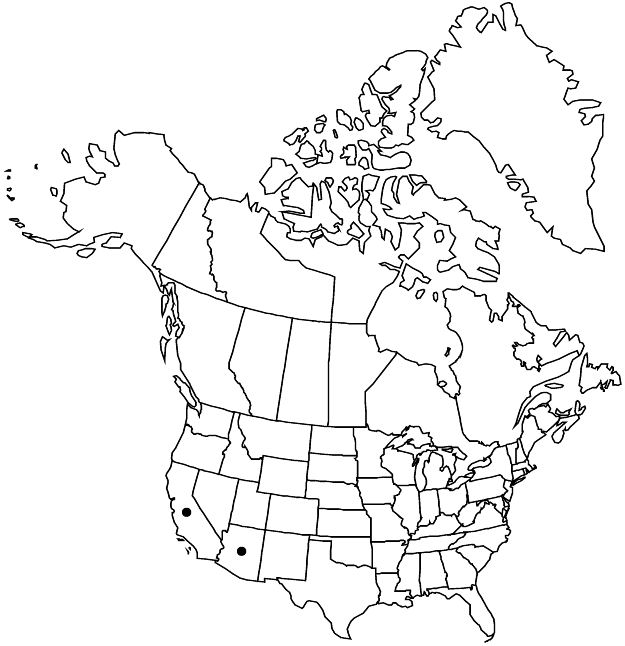Oxalis pes-caprae
Sp. Pl. 1: 434. 1753.
Herbs perennial, acaulous, rhizomes present vertical, white, rootlike, stolons absent, bulb usually solitary, sometimes with bulblets at base; bulb scales not observed. Leaves basal, rarely absent at flowering; petiole 3–12 cm; leaflets 3, green, rarely mottled with purplish red spots, angular-obcordate, (5–)7–20 mm, lobed 1/4–2/5 length, lobes apically convex, margins and abaxial surface villous, adaxial surface glabrous, oxalate deposits absent. Inflorescences umbelliform cymes, 2–12(–20)-flowered; scapes often becoming fistulose proximally, 15–30 cm, sparsely villous to pilose. Flowers tristylous in diploids and tetraploids, consistently short-styled in pentaploids; sepal apices with 2 orange tubercles; petals deep golden yellow, 15–20 mm. Capsules not seen. 2n = 14, 28, 35.
Phenology: Flowering Nov–Apr.
Habitat: Disturbed areas, orchards, fields, grasslands, oak woodlands, coastal sage, dunes.
Elevation: 10–500 m.
Distribution

Introduced; Ariz., Calif., s Africa, introduced also in West Indies, Bermuda, South America, Europe, Asia (China, Iran, Turkey), n Africa, Australia.
Discussion
Outside its native range, Oxalis pes-caprae is mostly represented by a sterile pentaploid morph, although tetraploids also are known. The occurrence of both pentaploid and tetraploid individuals in the exotic range may be the result of independent introductions (P. Michael 1964; R. Ornduff 1986). Fruit production has not been observed in North America, and the plants are assumed to be seed-sterile (Ornduff 1987). Bulbs of O. pes-caprae are rarely collected, as they detach easily from the vertical, rootlike stems. Each bulb may produce over 20, small, whitish bulblets each year. Bulblets may also be formed at the soil surface crown.
Oxalis pes-caprae was reported by J. K. Small (1933) to occur in waste places and cultivated grounds in northern Florida, but as noted by D. B. Ward (2004), no Florida specimens are known.